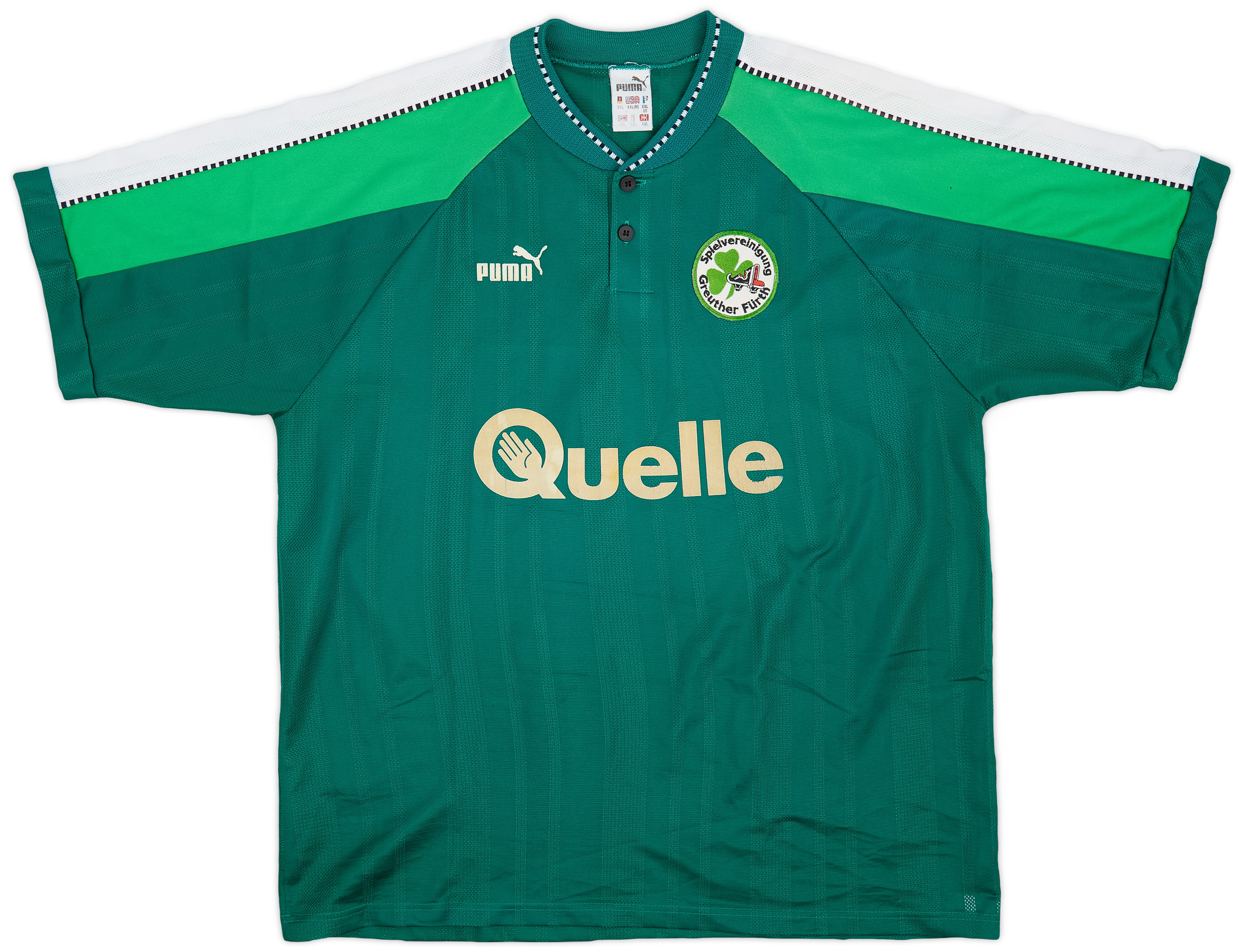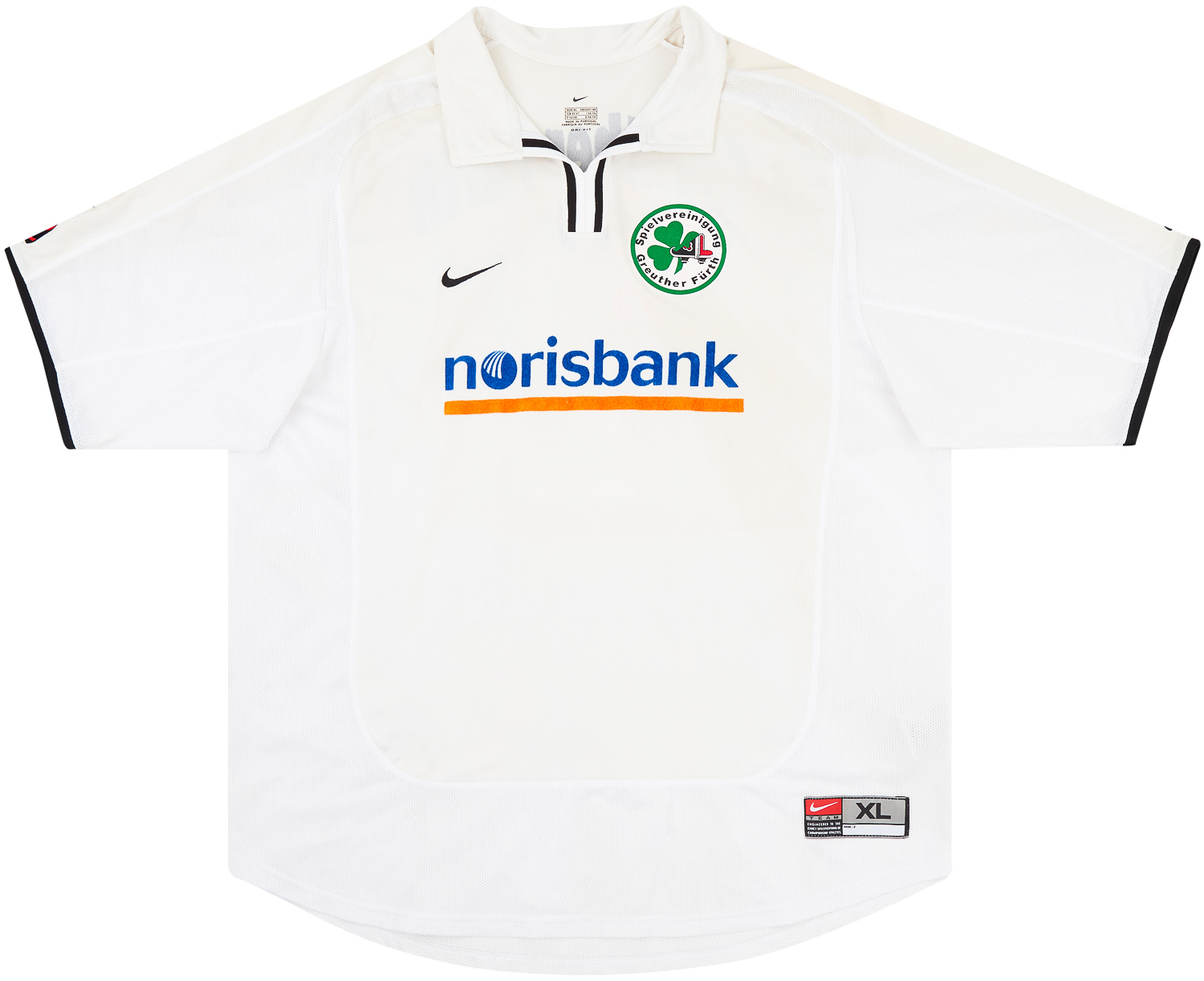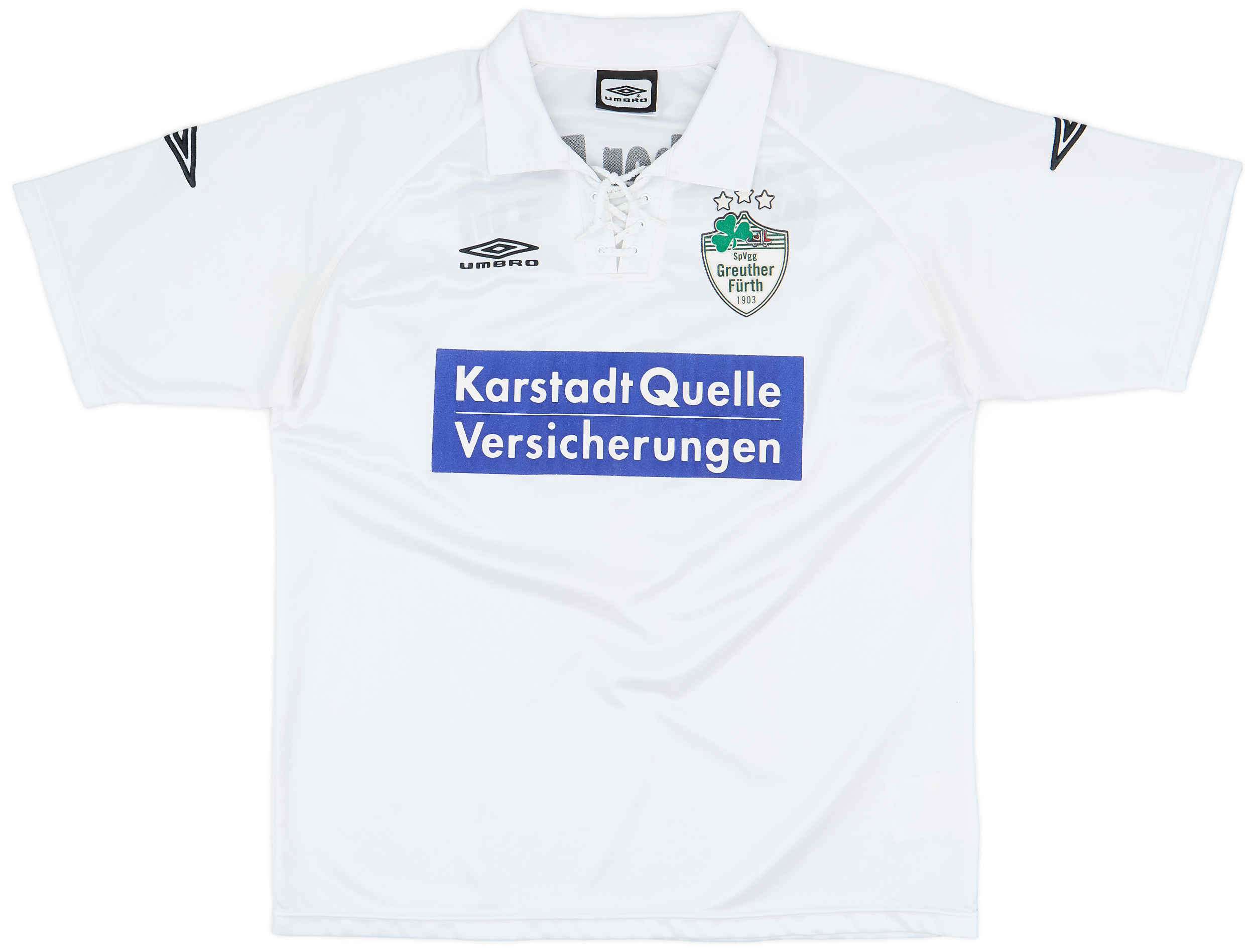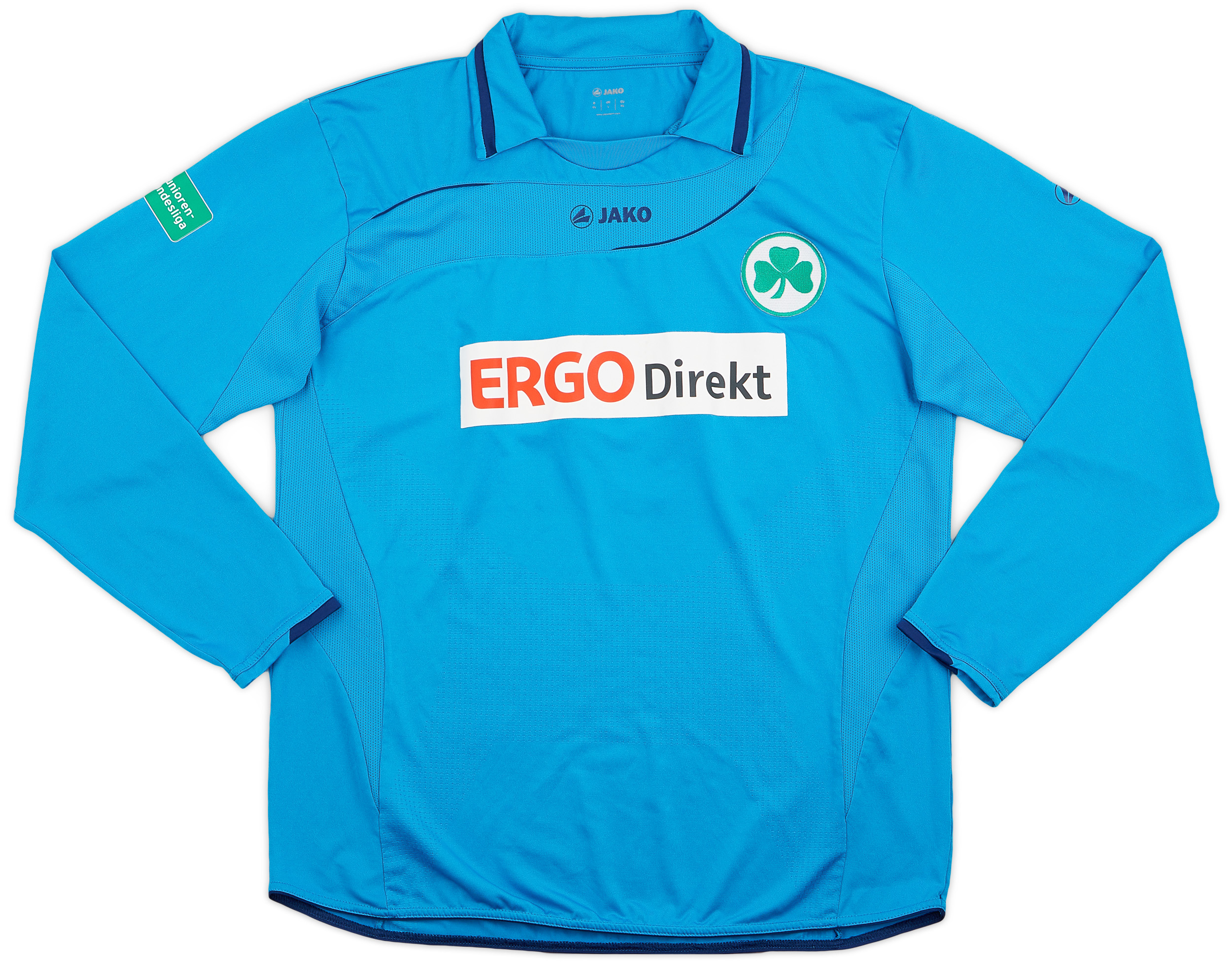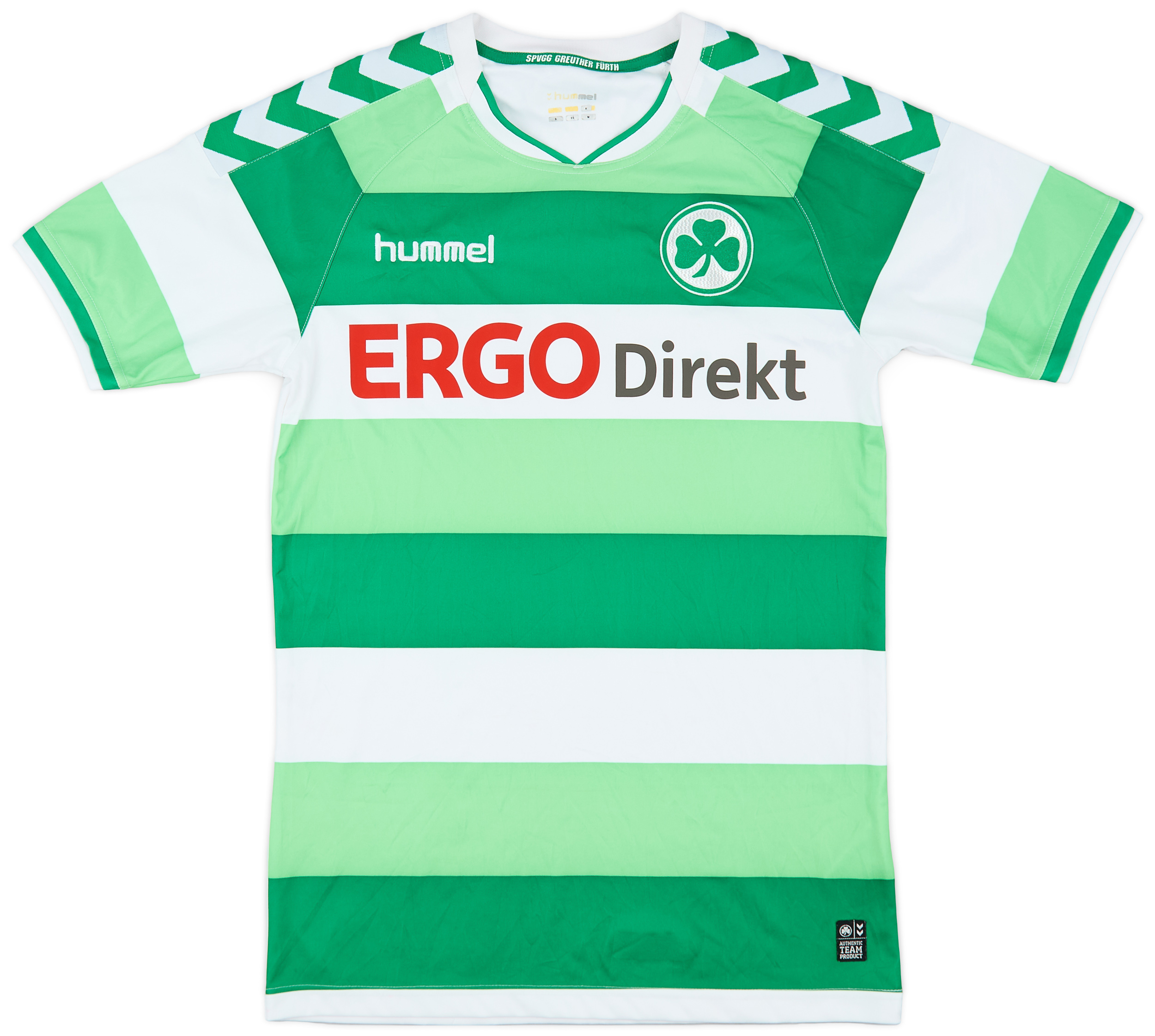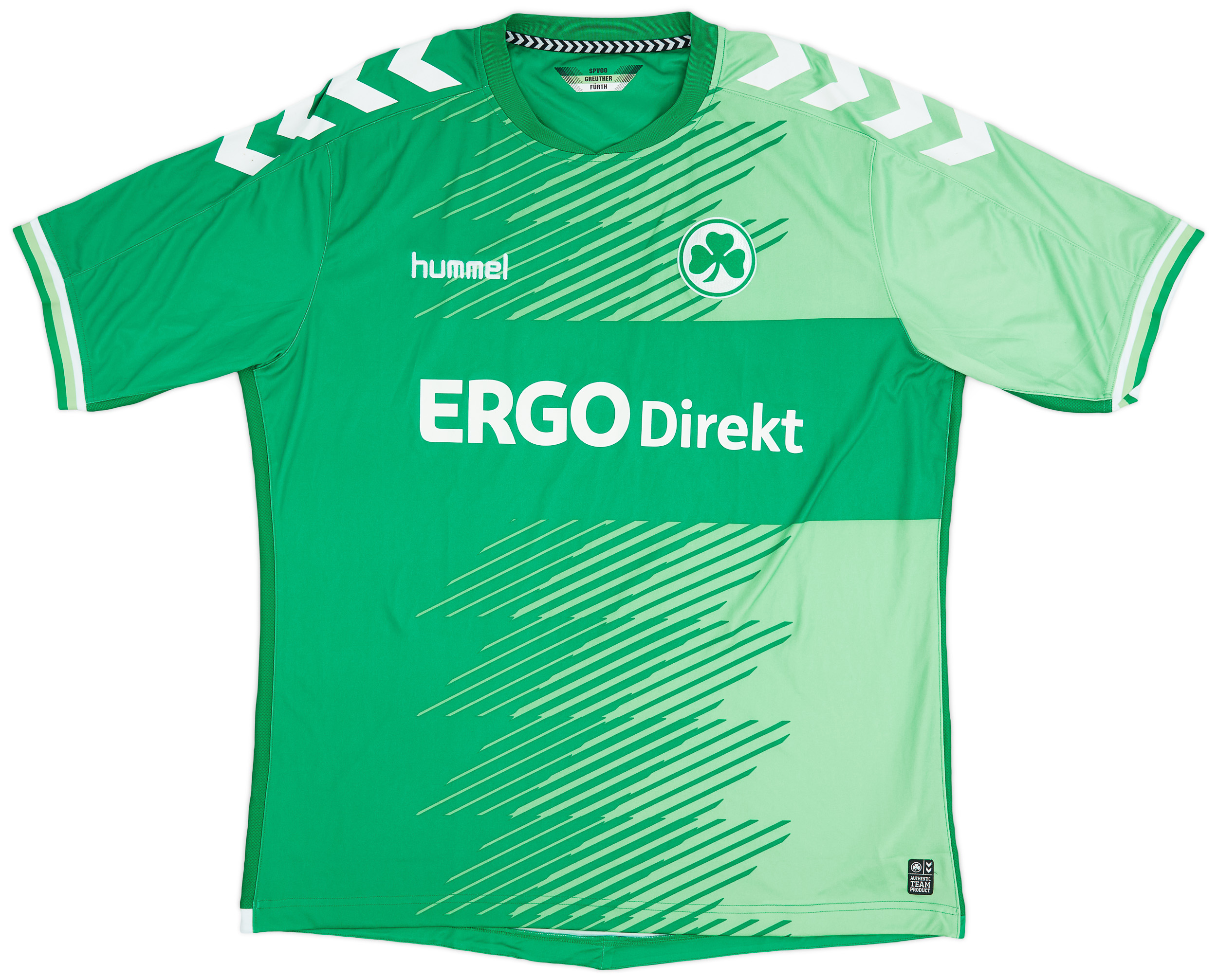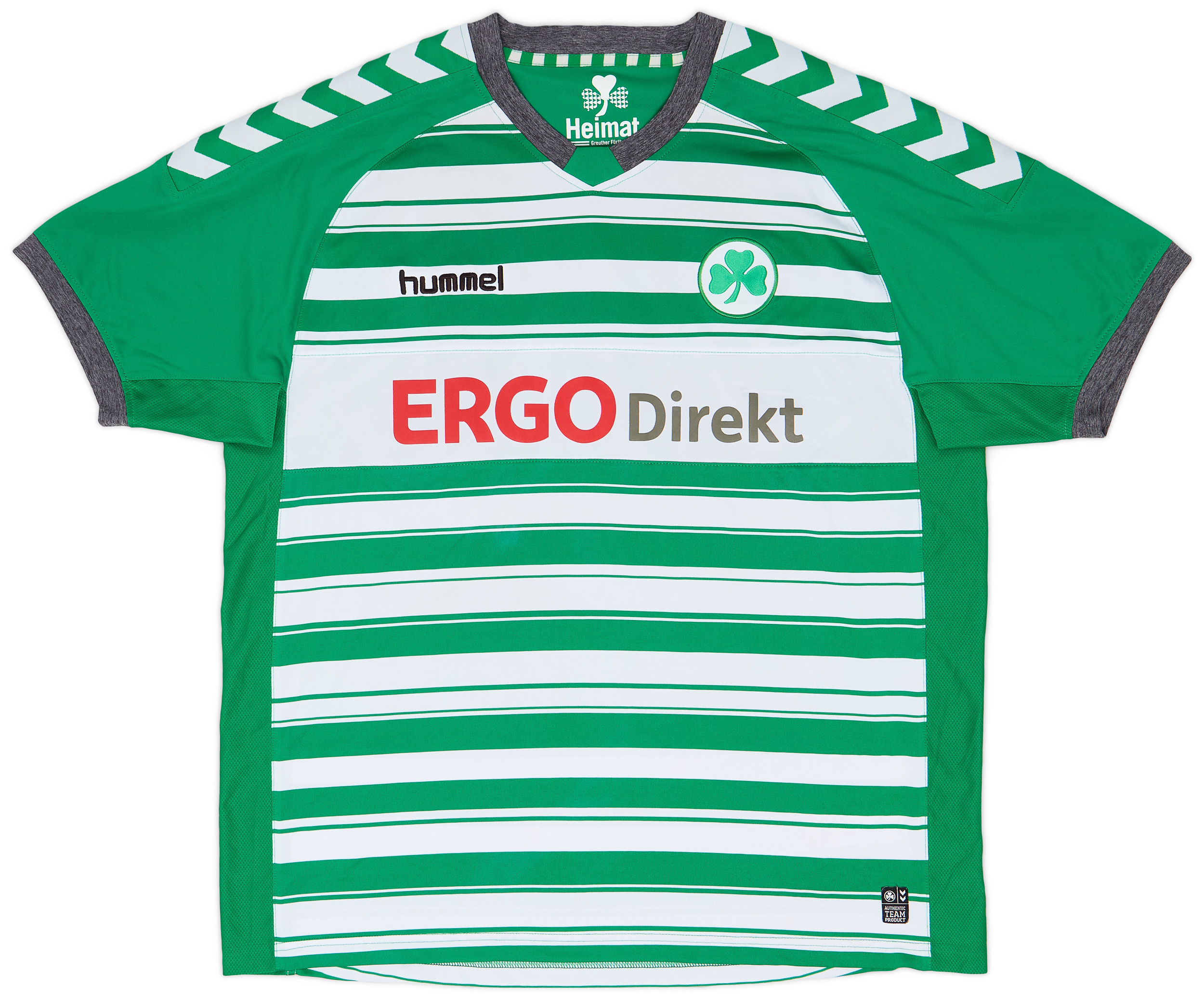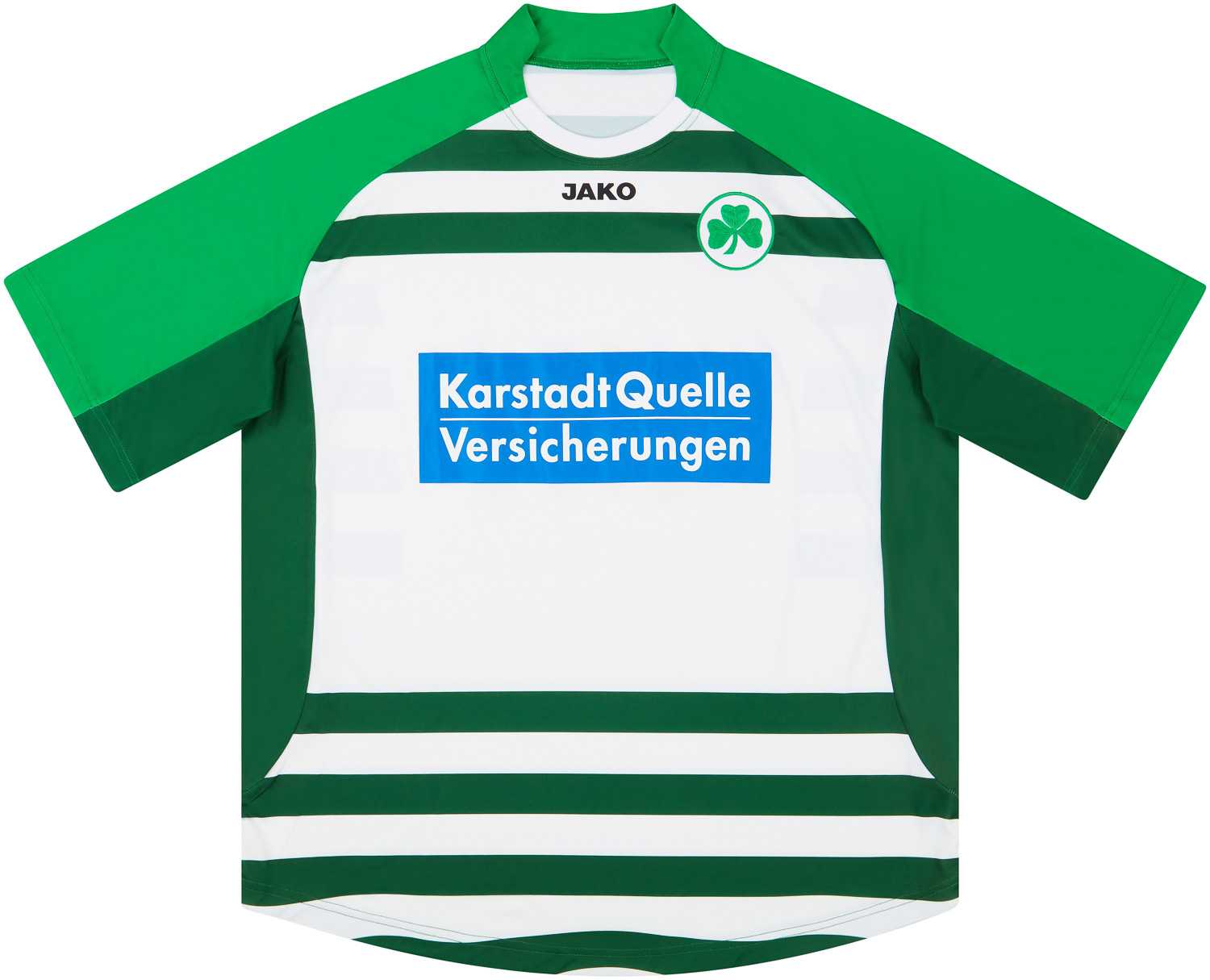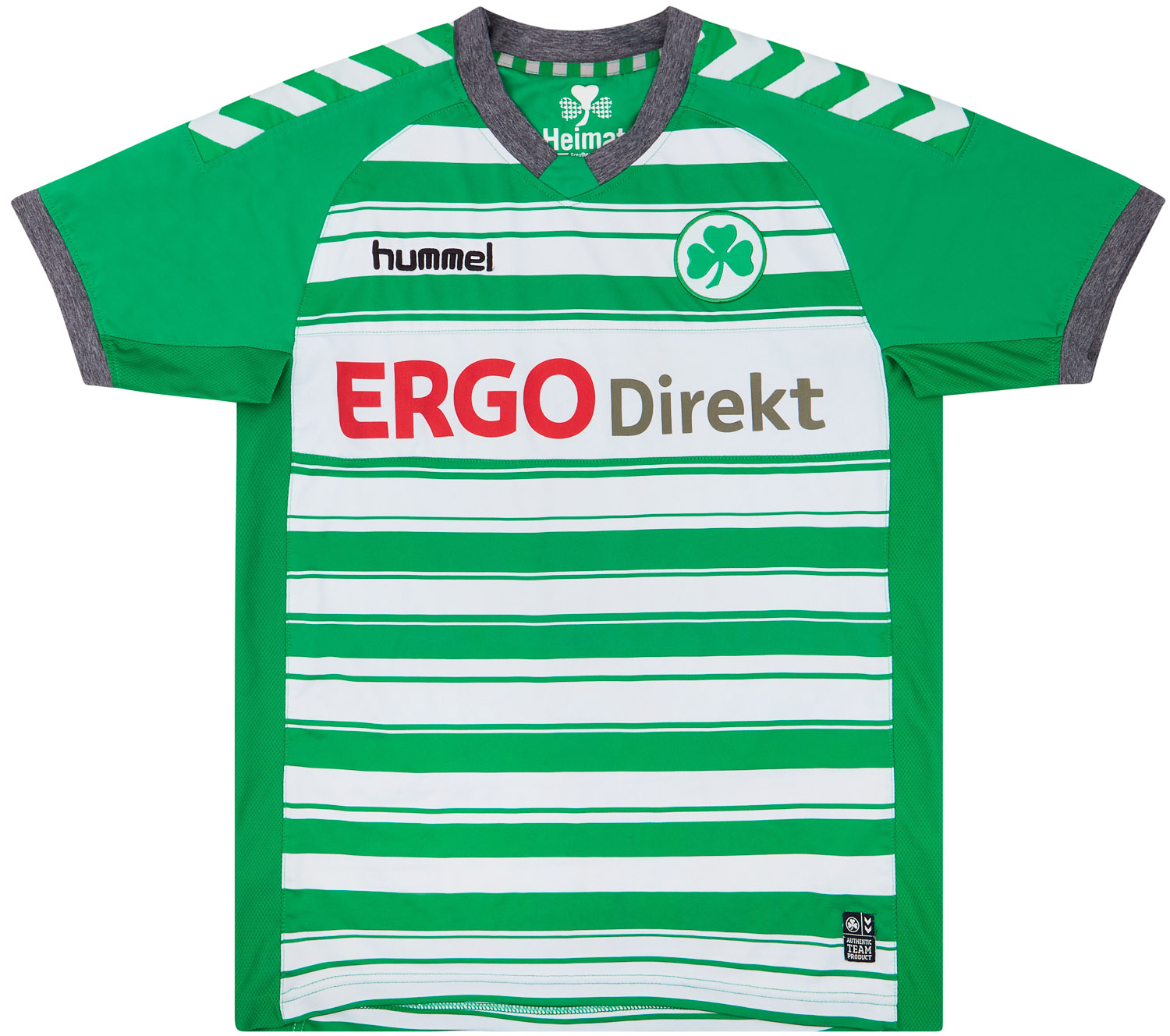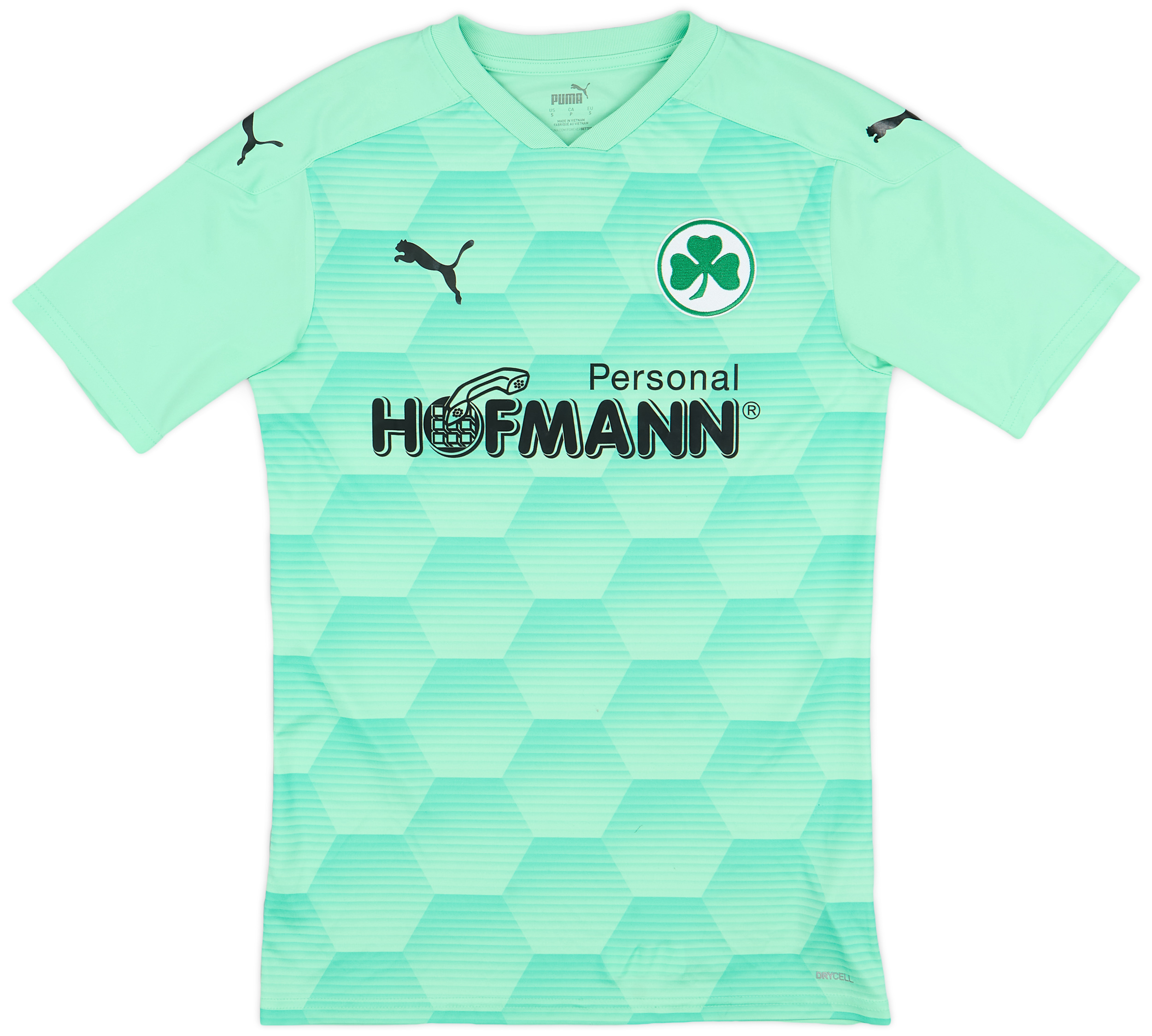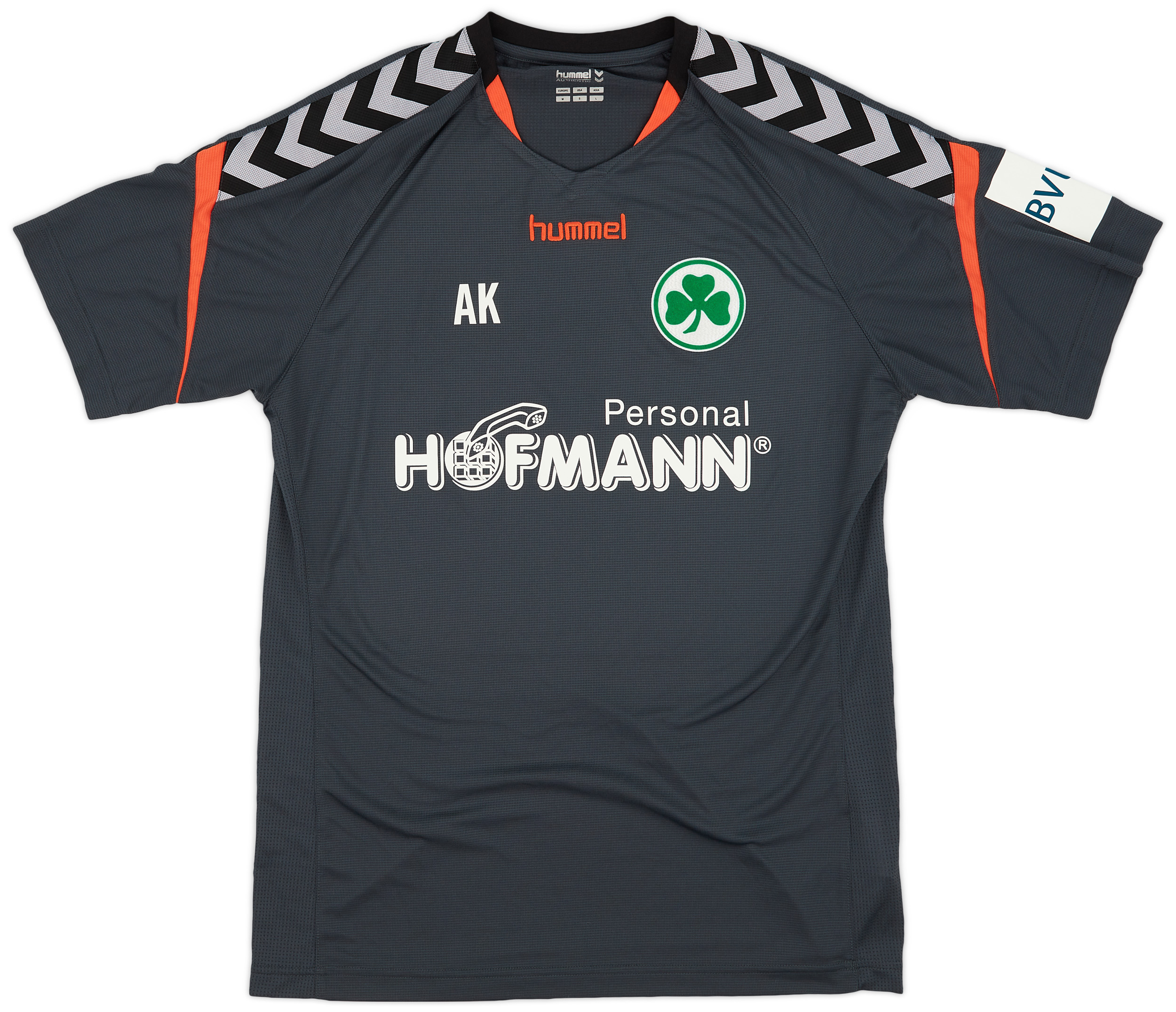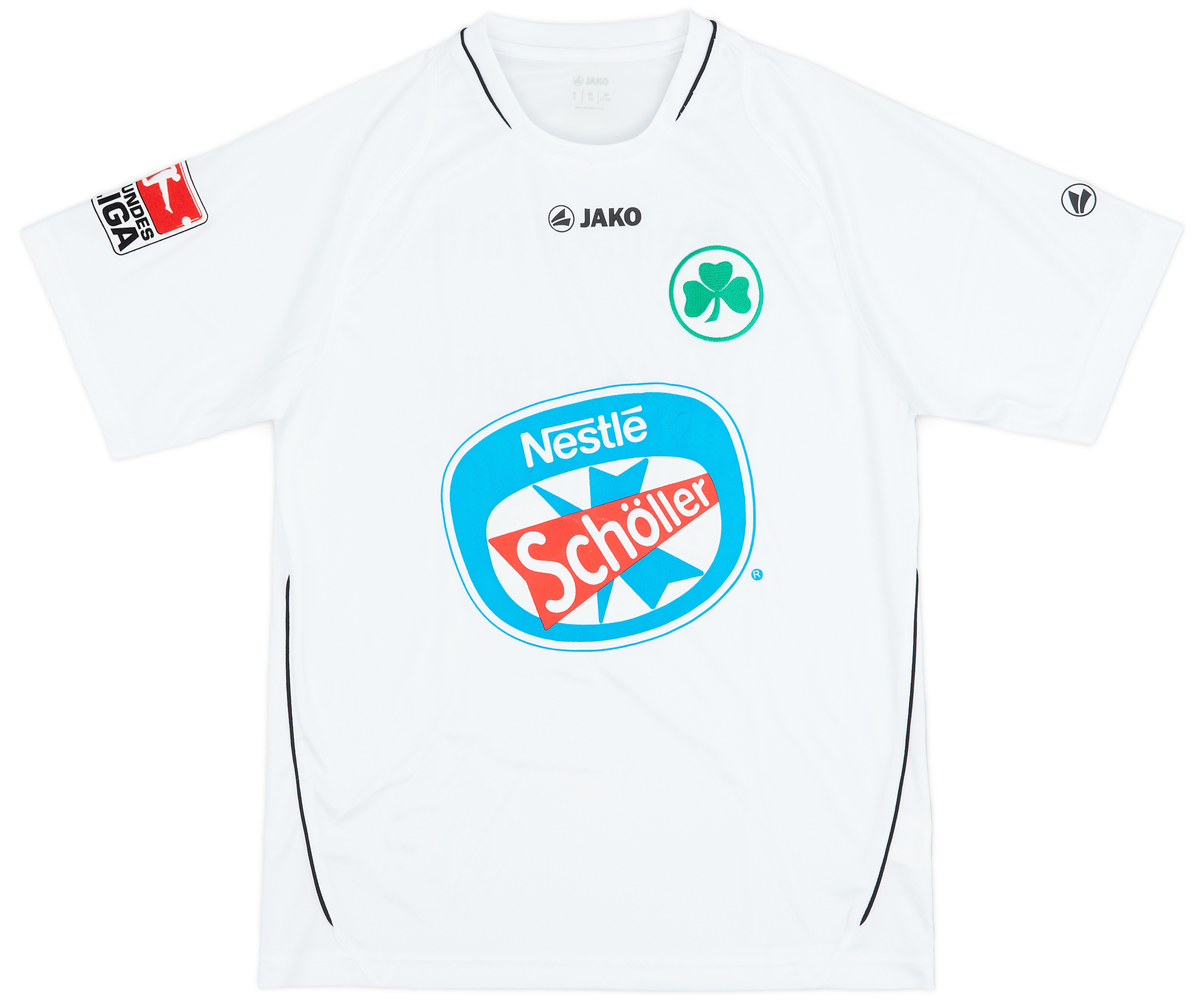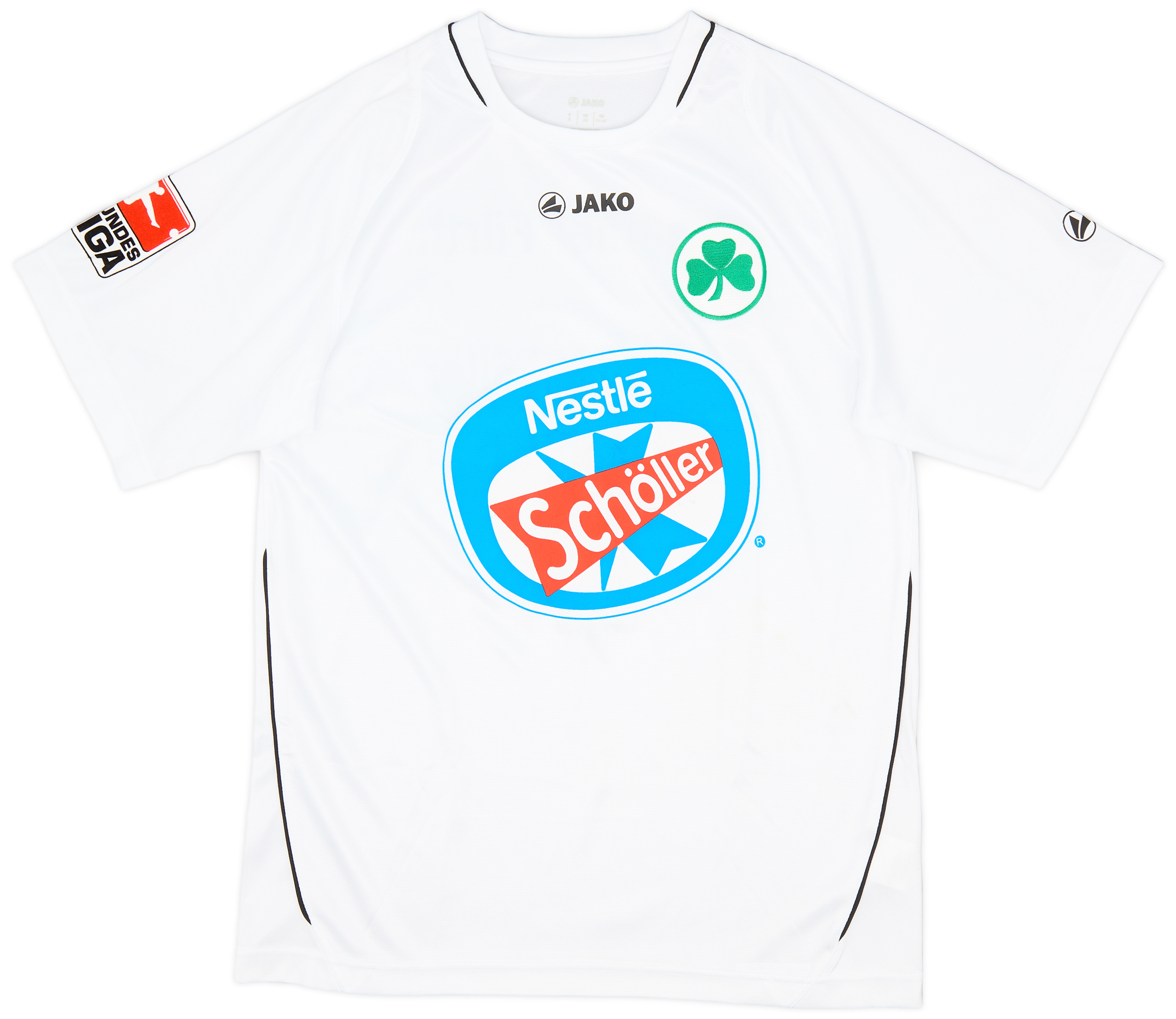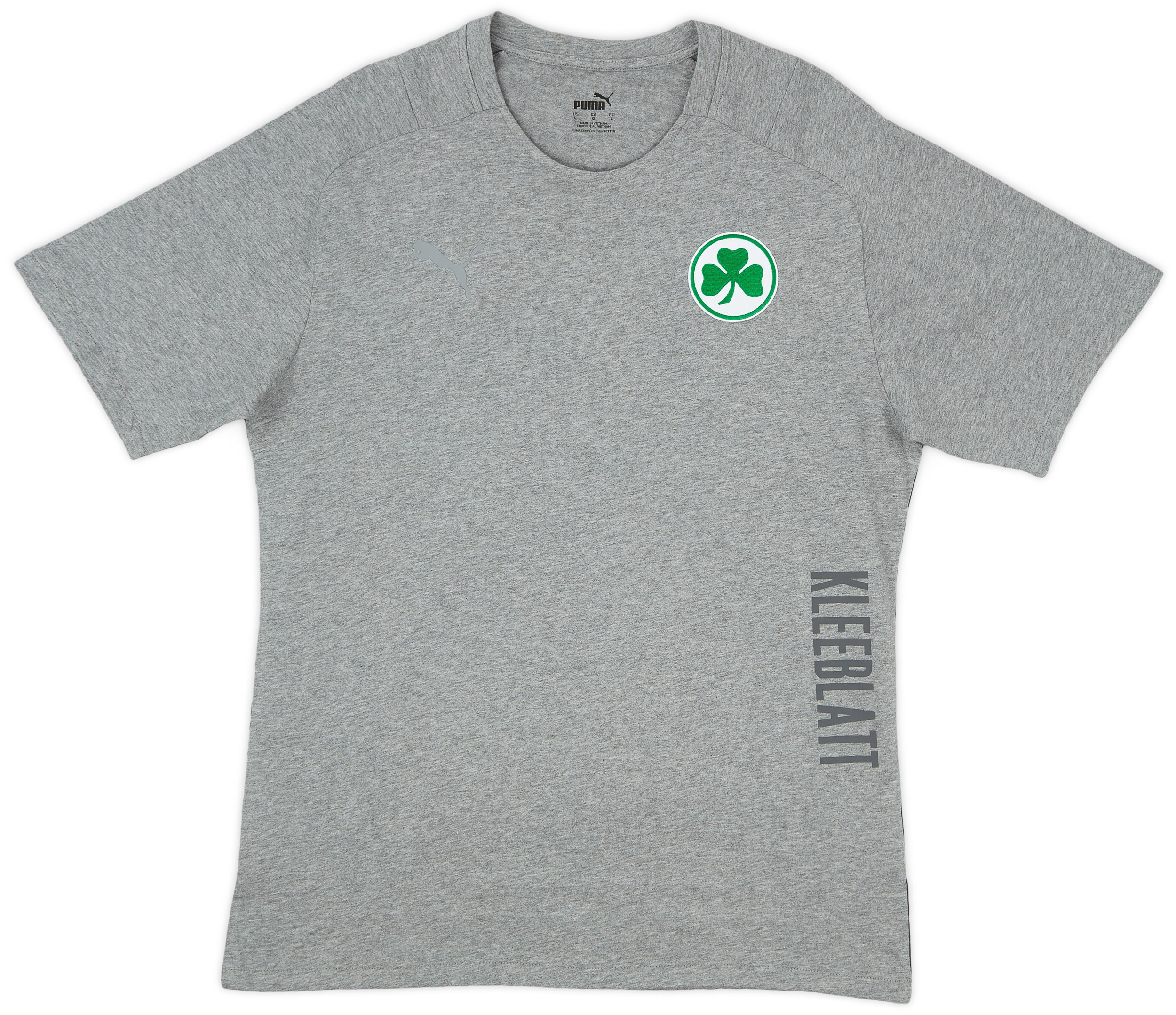Greuther Furth
Introduction SpVgg Greuther Fürth, often simply referred to as Greuther Fürth, is a storied football club located in the picturesque town of Fürth, Germany. Established in 1903, the club carries a rich tradition and a passionate fanbase that has followed its fortunes through both prosperous and challenging times. Greuther Fürth embodies the spirit of perseverance, […]
1997-98 Greuther Furth Home Shirt #13 - 8/10 - (L)
148.99£ - ca: €176
1997-98 Greuther Furth Home Shirt - 8/10 - (XXL)
118.99£ - ca: €140
1997-98 Greuther Furth Home Shirt - 8/10 - (XXL)
118.99£ - ca: €140
1999-00 Greuther Furth Home Shirt - 6/10 - (XL)
106.99£ - ca: €126
2000-01 Greuther Furth Match Issue Away Shirt Sbordone #2
94.99£ - ca: €112
2012-13 Greuther Furth Match Issue Away Shirt Mikkelsen #27
70.99£ - ca: €84
2005-06 Greuther Furth Match Issue Away Shirt Oehrl #15
70.99£ - ca: €84
2003-05 Greuther Furth Away Shirt #13 - 9/10 - (XL)
70.99£ - ca: €84
2007-08 Greuther Furth Youth Player Issue GK Shirt #12 - 6/10 - (XL)
58.99£ - ca: €70
2015-17 Greuther Furth Player Issue Away Shirt #10 - 7/10 - (M)
53.99£ - ca: €64
2014-16 Greuther Furth Home Shirt - 6/10 - (S)
53.99£ - ca: €64
2010-12 Greuther Furth Third Shirt - 9/10 - (L)
53.99£ - ca: €64
2011-12 Greuther Furth Home Shirt - 9/10 - (M)
53.99£ - ca: €64
2014-15 Greuther Furth Away Shirt - 8/10 - (XL)
47.99£ - ca: €57
2011-12 Greuther Furth Home Shirt (Women's M) - 7/10 - (M)
47.99£ - ca: €57
2015-16 Greuther Furth Away Shirt - 8/10 - (3XL)
47.99£ - ca: €57
2008-10 Greuther Furth Away Shirt - 6/10 - (M/L)
47.99£ - ca: €57
2014-15 Greuther Furth Hummel Hooded Sweat Top - 9/10 - (M)
47.99£ - ca: €57
2013-14 Greuther Furth Home Shirt - 8/10 - (XL)
41.99£ - ca: €50
2013-14 Greuther Furth Third Shirt - 9/10 - (L)
41.99£ - ca: €50
1997-98 Greuther Furth Home Shirt - 7/10 - (L.Boys)
41.99£ - ca: €50
2013-15 Greuther Furth Third Shirt #23 - 8/10 - (L)
41.99£ - ca: €50
2016-17 Greuther Furth Home Shirt - 6/10 - (L)
41.99£ - ca: €50
2007-09 Greuther Furth Home Shirt - 6/10 - (XXL)
35.99£ - ca: €42
2007-09 Greuther Furth Home Shirt - 8/10 - (XL)
35.99£ - ca: €42
2013-14 Greuther Furth Home Shirt - 6/10 - (S)
35.99£ - ca: €42
2009-10 Greuther Furth Home Shirt - 5/10 - (M/L)
29.99£ - ca: €35
2020-21 Greuther Furth GK Shirt - 7/10 - (S)
29.99£ - ca: €35
2021-22 Greuther Furth Puma Hooded Jacket
23.99£ - ca: €28
2000s Greuther Furth Jako Mascot Shirt - 8/10 - (XS)
23.99£ - ca: €28
2018-19 Greuther Furth Hummel Third Shirt #6 - 4/10 - (M)
23.99£ - ca: €28
2000s Greuther Furth Jako Mascot Shirt - 9/10 - (XS)
23.99£ - ca: €28
2021-22 Greuther Furth Puma Tee
14.99£ - ca: €18
2013-14 Greuther Furth Away Shirt #Clara #10 - 8/10 - (XL.Boys)
11.99£ - ca: €14
Introduction
SpVgg Greuther Fürth, often simply referred to as Greuther Fürth, is a storied football club located in the picturesque town of Fürth, Germany. Established in 1903, the club carries a rich tradition and a passionate fanbase that has followed its fortunes through both prosperous and challenging times. Greuther Fürth embodies the spirit of perseverance, embodying the highs and lows of football in Germany. Known for their distinctive green and white striped kits, they are often referred to as “Die Kleeblätter,” which translates to “The Clover Leaves.” This nickname reflects the club’s emblem, symbolizing luck and hope, key traits in the world of sports.
Club History
The roots of Greuther Fürth can be traced back to various smaller clubs, but it was in 1903 that they were officially formed as the “SpVgg Fürth.” Throughout the early 20th century, the club established itself in regional leagues, and by the 1920s, it became a formidable force in German football. The club enjoyed great success in the early years, winning the German championship in 1914 and again in 1926, making them one of the pioneers of the sport. Their victories during this time established Greuther Fürth as one of the prominent clubs in German football history.
The club’s evolution continued post-World War II when they faced significant challenges, including relegation to regional divisions while contending with the effects of the war on German football. In 1963, the Bundesliga was formed and Greuther Fürth found themselves in the newly created league, but they were relegated shortly after. Their struggles persisted through the decades, but the club’s resilience has kept it a beloved institution in Fürth. In 1996, a merger with local club “Greuther Fürth” adopted its current name and identity, connecting the club’s storied history with the ambitions of the future.
Achievements
Greuther Fürth has a unique place in German football history with notable achievements, especially during the early 20th century. Their most significant accomplishment came in 1914 when they won their first and only German championship title, a feat they repeated in 1926. The club also boasts several regional trophies and has been successful in the upper tiers of German football.
In more recent history, after several years in lower divisions, Greuther Fürth regained its Bundesliga status by winning promotion from the 2. Bundesliga in 2021. Unfortunately, their stint in the top division has seen them battle relegation. Nonetheless, this promotion marked a significant milestone, as it was their first return to the Bundesliga since the 2012-2013 season. The club has consistently been a presence in the second tier, showcasing a competitive spirit and dedication to reclaiming their former glory.
Significant Players and Matches
Throughout its history, Greuther Fürth has seen many talented players who have left an indelible mark on the club. One of the most notable figures is Paul Janes, who played for the club in the 1920s. A prolific forward, Janes was known for his scoring skills and played a vital role in the team’s early successes.
In modern times, players such as Ilir Gentzgjergji and Branimir Hrgota have made significant contributions, showcasing their skills in Germany’s top leagues and beyond. Furthermore, matches against local rivals like 1. FC Nürnberg, known as the “Franconian Derby,” are highlighted in club history, often bringing intense competition and vibrant atmospheres to the stadium.
Cultural Impact
Greuther Fürth’s influence extends beyond the pitch, deeply woven into the cultural fabric of the local community. The club’s passionate fanbase, known affectionately as the “Kleeblattfamilie,” plays a critical role in maintaining the club’s traditions and values. Matchdays are vibrant events, bringing together families, friends, and neighbors, fostering a strong sense of local identity and pride.
The club also invests in youth development and community engagement initiatives, contributing to local youth programs and helping nurture the next generation of football talent. Greuther Fürth serves not only as a football club but as a community hub where people gather, celebrate, and support a shared passion.
Conclusion
Greuther Fürth is much more than a football club; it is a symbol of resilience, community spirit, and a rich history that has shaped the identity of the town of Fürth. From its early championship successes to its ongoing journey through the ups and downs of German football, Greuther Fürth maintains a special place in the hearts of its supporters. As they continue to strive for success in domestic leagues and beyond, the club’s enduring legacy serves as a reminder of the exciting and passionate nature of football. Greuther Fürth proves that in the world of sports, every club, regardless of size or stature, can write its own story of glory and perseverance.


